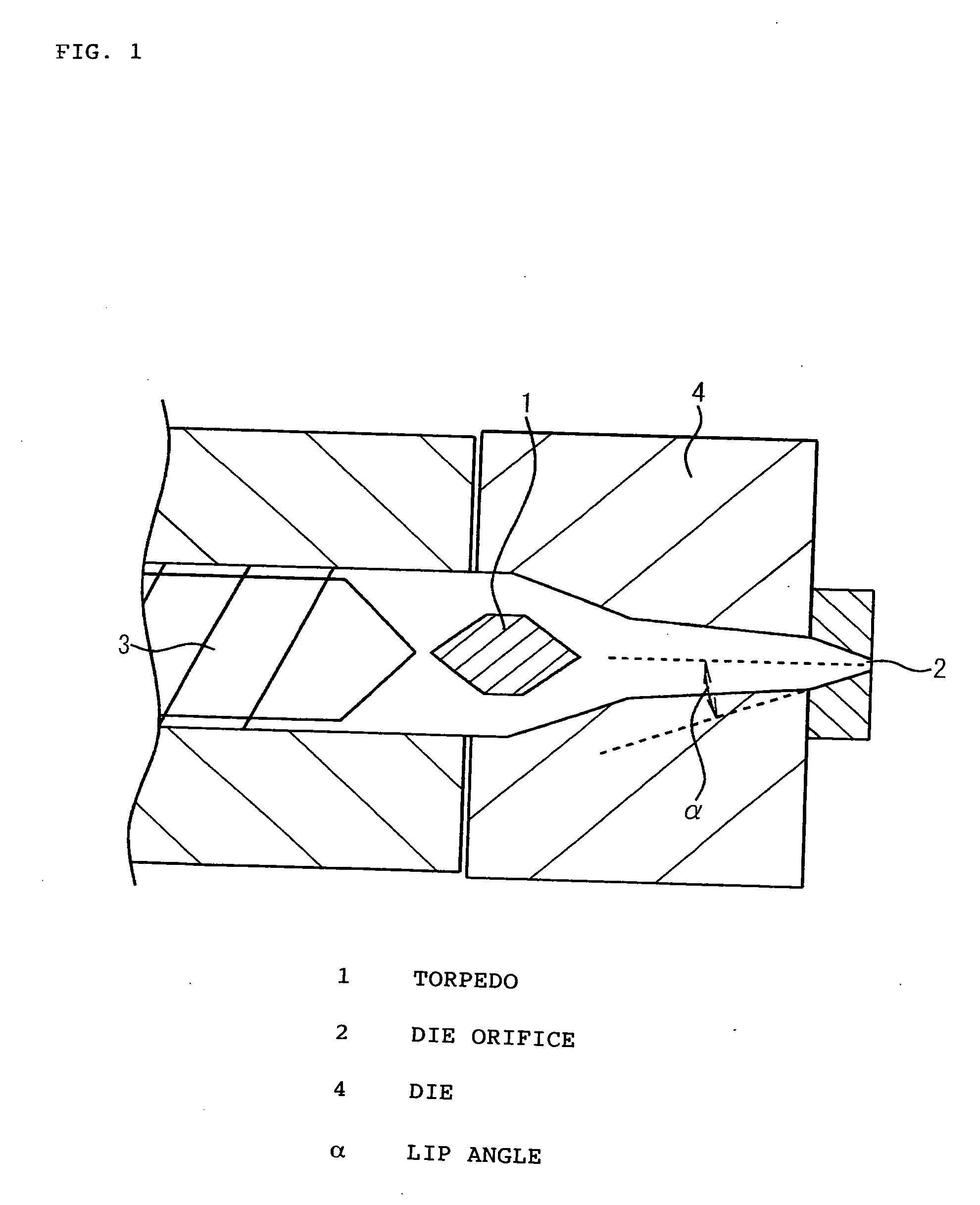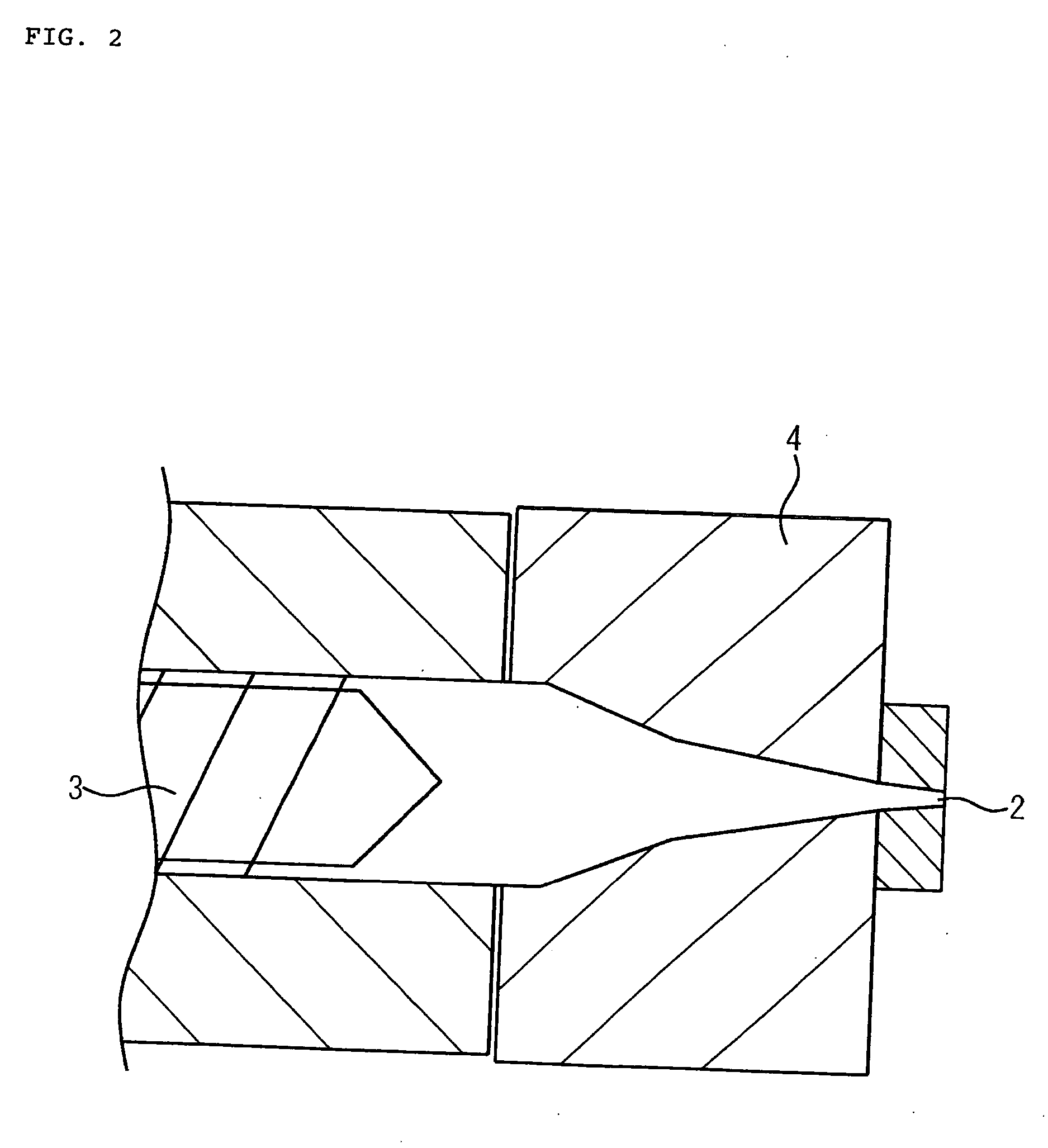Extruded polystyrene resin foam
a polystyrene resin and foam technology, applied in the direction of foams, etc., can solve the problems of poor thermal insulation properties and dimensional stability, easy breakage of foams, and varying strength with the direction of use, and achieve excellent mechanical properties. uniformity
- Summary
- Abstract
- Description
- Claims
- Application Information
AI Technical Summary
Benefits of technology
Problems solved by technology
Method used
Image
Examples
examples 1 to 5
[0073] An extruder for producing extruded foam was used. The extruder had a die construction according to the embodiment shown in FIG. 1, which included a torpedo disposed at the interior of the die.
[0074] Polystyrene (manufactured by Japan Polystyrene, Inc. under Product No. “HH32”) and a nucleating agent master batch and a fire retardant master batch in the respective amounts per 100 parts by weight of polystyrene shown in row a (“Additives”) of Table 1 were fed to an extruder, melted and kneaded. Next, isobutane and methyl chloride in the molar amounts per kilogram of polystyrene shown in row b (“Amounts of blowing agents”) of Table 1 were introduced into the molten mixture through a blowing agent injection port provided on the extruder and mixed with the melt, and the resin temperature was adjusted to the temperature shown in row c (“Resin temperature”) of Table 1. The resin was then extruded at a low pressure by being passed through a die adjusted to the same temperature as th...
PUM
| Property | Measurement | Unit |
|---|---|---|
| Length | aaaaa | aaaaa |
| Fraction | aaaaa | aaaaa |
| Thickness | aaaaa | aaaaa |
Abstract
Description
Claims
Application Information
 Login to View More
Login to View More - R&D
- Intellectual Property
- Life Sciences
- Materials
- Tech Scout
- Unparalleled Data Quality
- Higher Quality Content
- 60% Fewer Hallucinations
Browse by: Latest US Patents, China's latest patents, Technical Efficacy Thesaurus, Application Domain, Technology Topic, Popular Technical Reports.
© 2025 PatSnap. All rights reserved.Legal|Privacy policy|Modern Slavery Act Transparency Statement|Sitemap|About US| Contact US: help@patsnap.com


